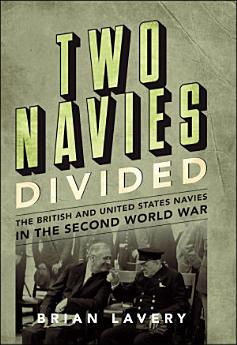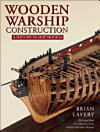Two Navies Divided: The British and United States Navies in the Second World War
Apr 2025 · Casemate Publishers
Ebook
464
Pages
family_home
Eligible
info
reportRatings and reviews aren’t verified Learn More
About this ebook
The title is derived from George Bernard Shaw's comment that 'England and America are two countries divided by a common language.' It is not intended to imply that the two navies were seriously at odds with one another, but rather to suggest, as in the case of language, that common roots and usages varied significantly. And the Second World War is a pertinent moment for comparison. They fought on the same side against a common enemy for nearly four years, but Britain fought the war for the survival of itself and its empire, though in the long term it failed with the latter, while the American government fought to maintain its influence through the balance of power; its people fought for revenge for Pearl Harbor, and out of a sense of justice. In this new book, Brian Lavery describes and analyzes the differences and similarities between the two navies and in doing so sheds fascinating light on how the naval war was fought. For example, both navies had spectacular failures after entering the war – the Royal Navy off Norway, the USN at Pearl Harbor and Savo Island. Paradoxically, both commenced the war with quite amateur performances by professional navies and ended with highly skilled performances by largely amateur manned forces. The training systems for regular officers had flaws in both countries. In Britain, entry was largely dependent on family income, in America, on political influence. But American officers probably had a broader perspective by the time they entered active service. The book covers ships and weapons systems – for instance, the British used too many gun types in the 4 to 6in range, while the Americans concentrated on the well-designed 5in. And the author describes conditions onboard ships. British vessels were awash with alcohol, which had its attractions for Americans when alongside; the Americans offered ice cream in return. These examples represent only a tiny proportion of the subjects covered in this stimulating analysis. Aviation, the marines of both navies, anti-submarine and mine warfare, uniforms, propulsion systems, shipbuilding and building programs, commanders and national leaders, ratings and officers, ship design, geographical environments, naval bases, hammocks and bunks, the deployment of women – these are among the myriad big and small themes that will open the eyes of naval historians and enthusiasts, and show anyone with an interest in the Second World War how these two great allies came together to defeat the Axis forces.
About the author
Brian Lavery is one of Britain's leading naval historians and a prolific author. A Curator Emeritus at the National Maritime Museum, Greenwich, and a renowned expert on the sailing navy and the Royal Navy, in 2007 he won the prestigious Desmond Wettern Maritime Media Award. His naval writing was further honoured in 2008 with the Society of Nautical Research's Anderson Medal. His recent titles include Ship (2006), Royal Tars (2010), Conquest of the Ocean (2013), In Which They Served (2008), Churchill's Navy (2006), and the Sunday Times bestseller Empire of the Seas (2010). Brian lives in London.
Rate this ebook
Tell us what you think.
Reading information
Smartphones and tablets
Install the Google Play Books app for Android and iPad/iPhone. It syncs automatically with your account and allows you to read online or offline wherever you are.
Laptops and computers
You can listen to audiobooks purchased on Google Play using your computer's web browser.
eReaders and other devices
To read on e-ink devices like Kobo eReaders, you'll need to download a file and transfer it to your device. Follow the detailed Help Center instructions to transfer the files to supported eReaders.








